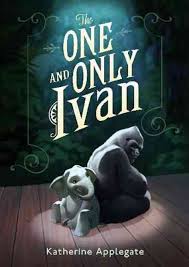How does an author take a reader deeply into a character’s POV? By using direct interior monologue and a stream of consciousness techniques.
This is part 3 of a 3-part series on Point of View: Techniques for Getting Inside a Character’s Head. Read the whole series.
Outside Outside/Inside Inside
Going Inside a Character’s Head, Heart and Emotions
 Omniscience.Jauss says, “In direct interior monologue, the character’s thoughts are not just ‘reflected,’ they are presented directly, without altering person or tense. As a result, the external narrator disappears, if only for a moment, and the character takes over as ‘narrator.’” (p. 51)
Omniscience.Jauss says, “In direct interior monologue, the character’s thoughts are not just ‘reflected,’ they are presented directly, without altering person or tense. As a result, the external narrator disappears, if only for a moment, and the character takes over as ‘narrator.’” (p. 51)
Here, “. . . the narrator is not consciously narrating.” In much of IVAN, he is consciously narrating the story. Sometimes, it might be hard to distinguish the difference because the character and narrator are the same, and it’s written in present tense (except when he is telling about the background of each animal). This closeness of the character and narrator is one reason to choose first-person, present tense. But there are still times when it is clear that IVAN is narrating his story.
But there also times when that narrator’s role is absent. In the “nine thousand eight hundred and seventy-six days” chapter, Ivan is worried about what Mack will do after the small elephant Ruby hits Mack with her trunk:
“Mack groans. He stumbles to his feet and hobbles off toward his office. Ruby watches him leave. I can’t read her expression. Is she afraid? Relieved? Proud?”
The last three questions remove the narrator-Ivan and give us what Ivan is thinking at the moment. The direct interior monologue gives the reader direct access to the character. With a third person narrator, those rhetorical questions might be indirect interior monologue; but here, because of the first person narration, it feels like direct interior monologue.
Or, in the “click” chapter, Ivan is about to be moved to a zoo:
The door to my cage is propped open. I can’t stop staring at it.
My door. Open.
The first two sentences still feel like a narrator is reporting. But “My door. Open.” feels like direct access to Ivan’s thought at that precise moment. He’s not looking back and reporting, but this is direct access to his thoughts.
A last technique for diving straight into a character’s head is stream-of-consciousness. Jauss says, “. . . unlike direct interior monologue, it presents those thoughts as they exist before the character’s mind has ‘edited’ them or arranged them into complete sentences.” (P. 54)
When Ivan is finally in a new home at a local zoo, he is allowed to venture outside for the first time. The “outside at last” chapter is stream-of-consciousness.
Sky.
Grass.
Tree.
Ant.
Stick.
Bird. . . .
Mine.
Mine.
Mine.
What the reader feels here is Ivan’s wonder at the great outdoors. It’s a direct expression of Ivan’s joy in being outside after decades of being caged. We are one with this great beast and it gives the reader joy to be there.
Or look at the “romance” chapter, where Ivan is courting another gorilla.
A final note: Sometimes, an author breaks the “fourth wall,” the “imaginary wall that separates us from the actors,” and speaks directly to the reader. This is technically a switch from 1st person POV to 2nd person POV. But it is very effective in IVAN in the second chapter, “names.” Here, Ivan acknowledges that you—the reader—are outside his cage, watching him. It was a stunning moment for me, as I read the story.
“I suppose you think gorillas can’t understand you. Of course, you also probably think we can’t walk upright.
Try knuckle walking for an hour. You tell me: which way is more fun?”
Do stories and novels have to stay in one point of view throughout an entire scene or chapter? No. Not if you are thinking about point of view as a technique to draw the reader close to a character or shove the reader away. You can push and pull as you need. You can push the reader a little way outside to protect his/her emotions from a distressing scene. Or you can pull them into the character’s head to create empathy or hatred. You can manipulate the reader and his/her emotions. It’s a different way of thinking about point of view. For me, it’s an important distinction because my stories have often gotten characterization comments such as , “I just don’t feel connected to the characters enough.” I think a mastery of Outside, Outside/Inside, and Inside point of view techniques holds a key to a stronger story.
In the end, it’s not about the labels we apply to this section or that section of a story. These techniques can blur, especially in a story like IVAN, written in first person, present tense. Instead, it’s about the reader identifying with the character in a deep enough way to be moved by the story. These techniques–such a different way to think about point of view!–are refreshing because they give us a way to gain control of another part of our story. These are what make novels better than movies. I’ve heard that many script-writers have trouble making the transition to novels and this is the precise place where the difficulty occurs. Unlike movies, novels go into a character’s head, heart and mind. And these point of view techniques are your road map to the reader’s head, heart and mind.
This has been part 3 of a 3-part series on Point of View: Techniques for Getting Inside a Character’s Head. Tomorrow, will be Inside: Deeply Inside a Character’s Head. Read the whole series:
Outside Outside/Inside Inside


2 thoughts on “0”
Comments are closed.